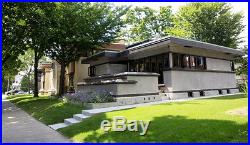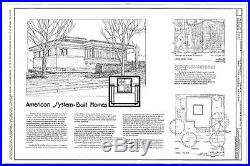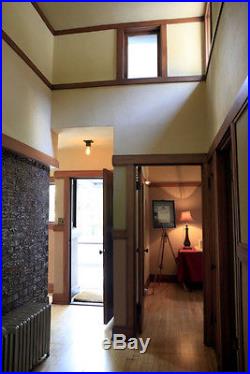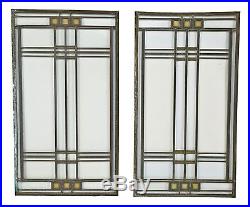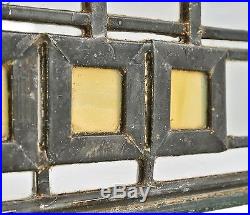American System Built Homes (single story model). Frank Lloyd Wright, father of the Prairie School of design, was always interested in ways to reduce the cost of construction and make great architecture more affordable. With the �System Built� concept he explored the possibility of creating a kit of parts that could be assembled into a variety of different house plans. Only a few of these houses were built. This house, in Milwaukie, Wisconsin, is an excellent example. It shows the application of the kit to a single story design. The design demonstrates many of the qualities that make Frank Lloyd Wright�s homes so livable. The entry sequence involves changes in direction, steps, increasing levels of enclosure, until, finally, at the heart of the house we reach the hearth. All the spaces in this house pinwheel around the fireplace, the glowing warmth at the center of the home. Just behind it Wright raises the ceiling, bringing natural light into what would have been the darkest space in the house. This stable, warm, sunlit center of the home contrasts with the edges, where windows, pressed to the corners of the rooms, dissolve the �box� of the structure. As a work of art these prints are worth purchasing in their own right. For those of you interested in building a historically inspired house, these plans offer an excellent starting point. Essentially a single story house, it is built over a full basement. The main level includes approximately 900 square feet of conditioned space. The front porch adds another approximately 190. This design is most suitable for a flat site in which pleasant views may be had in all directions. With careful planning of terraces it could be adapted nicely to a moderately sloping site as well. This house would be comfortable in a suburb or country setting. Including porches, the main house has outside dimensions of approximately 32′x40′. Building name: American System Built Homes (single story). Designer/Architect: Frank Lloyd Wright. Date of construction: 1926. Style: Frank Lloyd Wright Style Home. Number of sheets: 4 sheets measuring 24″ x 36″. Cover Sheet, Information, Perspective, Site Plan. Basement Plan, First Floor Plan, Section, 1/4″=1′-0″, 3/4″=1′-0″. 4 Elevations, 1/4″=1′-0″. Building Section, Fireplace & Window Details, various scales. The prints you are purchasing are crisp, high resolution black line copies on white bond paper. The original drawings were beautifully delineated in 1998, by the Historic American Building Survey. Please view my other plans for more Frank Lloyd Wright home plans and for a large variety of house plans in many other styles as well. Also please visit my website, Historic Home Plans. Which contains further information about this plan and many others in my collection. Here is the page of Frank Lloyd Wright home plans. IF YOU ARE PLANNING TO BUILD: These plans are NOT complete architectural drawings as might be required by your local permitting agency and do not contain all the structural, waterproofing and other details and information necessary for construction. But your local builder or architect should be able to adapt these drawings and add to them as necessary. What they do provide is accurate design information about a REAL Frank Lloyd Wright home, not a pseudo-Wright tract house as you will find in the house plan magazines on your supermarket shelf. The item “Small single story, 2 bedroom home design by Frank Lloyd Wright, Prairie School” is in sale since Tuesday, December 31, 2013. This item is in the category “Home & Garden\Home Improvement\Building & Hardware\Building Plans & Blueprints”. The seller is “antoniob1965″ and is located in Portland, Oregon. This item can be shipped worldwide.
- Project Type: Home
